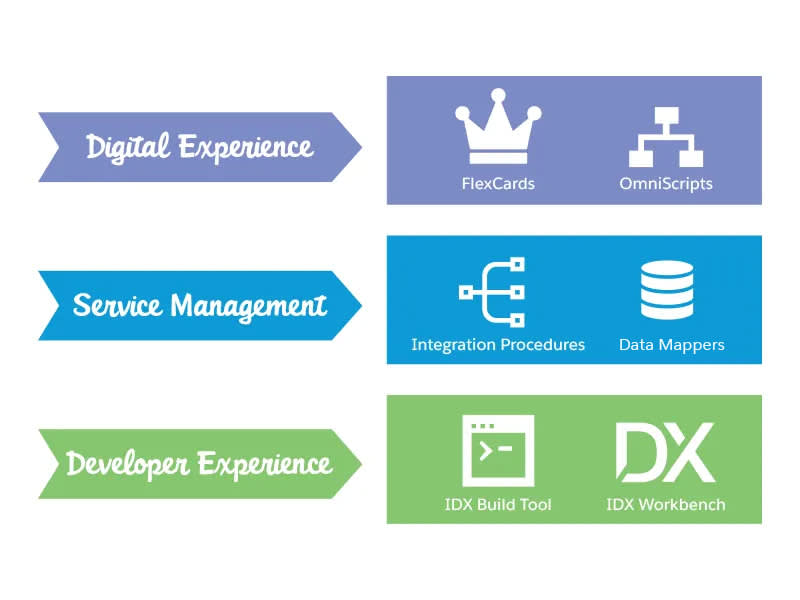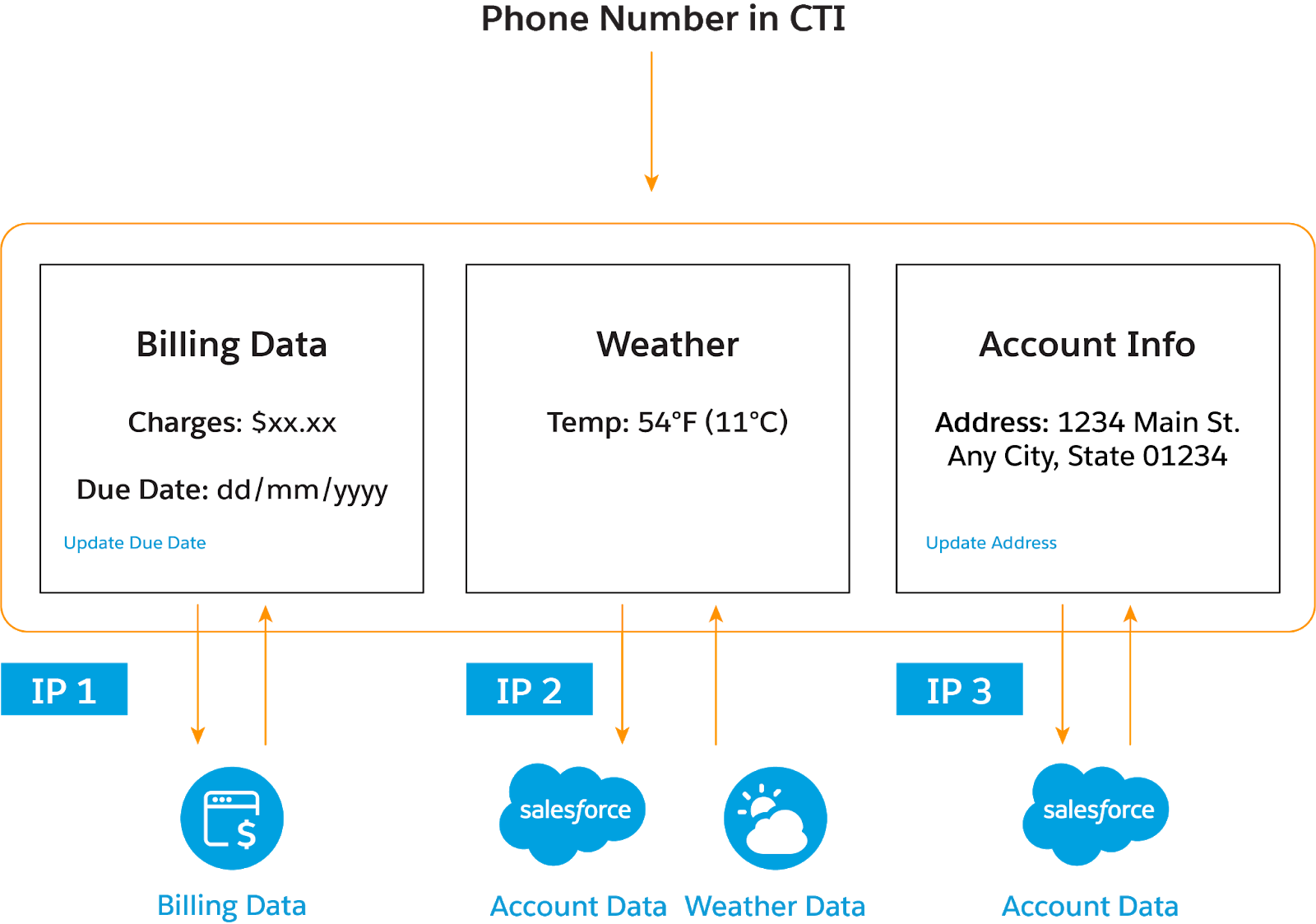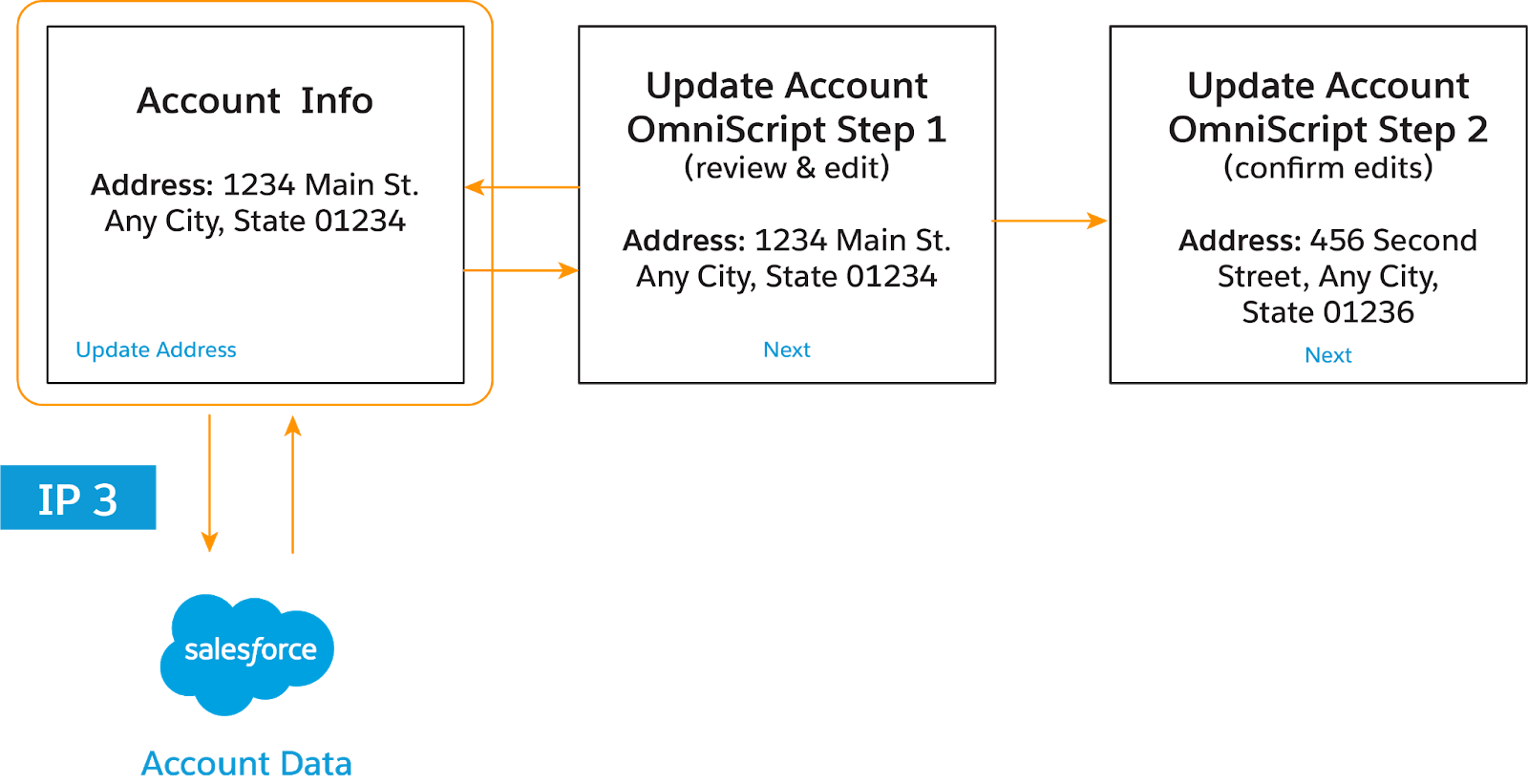Meet OmniStudio
Learning Objectives
After completing this unit, you’ll be able to:
- Explain how OmniStudio meets consumer demand for omnichannel sales and service.
- Describe the OmniStudio digital engagement suite’s layers, features, and functionality.
- Summarize how OmniStudio tools work together.
The Demand for Omnichannel Service
Most consumers today want anytime, anywhere access to a company. They expect businesses to know who they are, what products they have, and where they’ve been. Consumers also expect to have access to online shopping and services 24/7 from any device.
Yet most IT organizations struggle to meet these demands because of the following challenges.
- Technologies that work only on specific channels
- Constantly evolving products and promotions
- High and volatile volumes of transactions
- Complex rules and usability obstacles
- Disparate legacy systems
As leaders focus on accelerating technological changes to keep up with the new needs of employees and customers, digital transformation has truly become imperative.
In the industries that Salesforce serves, it’s sometimes tough to meet all of these demands, especially since direct interactions with customers are often short and infrequent. To achieve the best results (read: happy customers) in a limited amount of time, these interactions need to be efficient, accurate, and personal. They also need to be completed via a channel of the customer’s choosing.

In addition to functionally specific clouds such as Sales, Service, Marketing, and Commerce, Salesforce gives customers this speed and agility by offering industry-specific clouds such as Financial Services, Health, Education, Nonprofit, Public Sector Solutions, Manufacturing, Consumer Goods, Communications, Media, and Energy & Utilities. These cloud solutions combine the Salesforce cloud and specific industry models, processes, and solutions tailored to the best practices of each industry.
To drive even more customer-centric transformations and digital engagement, Salesforce released a suite of configuration tools and resources that provides guided user experiences for all Salesforce customers.
Say Hello to OmniStudio
The OmniStudio digital engagement suite simplifies and accelerates digital transformation, so our customers are agile, flexible, and ready to respond to spikes in demand.
With OmniStudio’s drag-and-drop configuration capabilities, customers create guided brand experiences specific to their industry with clicks rather than custom code. They effortlessly meet the demands of omnichannel service by deploying and updating these interactions across multiple devices and channels, increasing user productivity and enabling greater self-sufficiency for employees, consumers, and partners. OmniStudio also includes tools for integrating with other enterprise applications and data.
Omnistudio integrates Salesforce automation capabilities across Platform, Einstein, MuleSoft, Industries, and AppExchange to deliver an efficient end-to-end workflow platform.
Let’s take a tour of the several layers of components OmniStudio offers.
- Digital Experience
- Service Management
- Developer Experience

Now let’s find out what makes each OmniStudio layer unique.
The Digital Experience Layer
The Digital Experience layer includes two primary user interface (UI) components.
-
OmniStudio FlexCards: Cards that display contextual information and actions in an at-a-glance format for customer account data
-
OmniScripts: A guided path to complete a business process
These declarative tools provide rich user interaction experiences that are easily understandable. They’re built on Salesforce Lightning web components (LWC), which run inside Salesforce and improve UI performance.
The Service Management Layer
The Service Management layer includes data services that read, write, transform, calculate, and track data within and outside of Salesforce.
-
OmniStudio Data Mappers: Configurable services for retrieving, transforming, and updating data
-
OmniStudio Integration Procedures: Declarative, server-side processes that execute multiple actions in a single server call
Data Mappers and Integration Procedures deliver data to and from UI components. They orchestrate calls to Apex classes, calculation engines, and external application programming interfaces (APIs) to execute whatever business logic is required by the process.
The Developer Experience Layer
The Developer Experience layer is an application lifecycle layer of tools for developers to manage and move OmniStudio component changes between environments. These developer tools are:
-
IDX Build Tool: Command-line automation tool that packages and migrates OmniStudio Datapacks in a source-control-friendly format
-
IDX Workbench: Desktop application that enables developers to migrate Datapacks and Salesforce metadata from one org to another or from an org to a Git repository
For simple migrations, developers can export and import the component as a Datapack, a collection of OmniStudio components packaged together for exporting and importing purposes. For example, developers can export and import a FlexCard with a specific Integration Procedure.
For large or complex migrations, developers use either IDX Build Tool or IDX Workbench.
IDX Build Tool preserves dependencies, validates data, and verifies the success of migration.
IDX Workbench includes a Test Console where users can run Test Procedures and view Gantt charts of their step-by-step performance. A Test Procedure is an Integration Procedure that performs a unit test of almost anything an Integration Procedure can invoke, such as a Data Mapper, a Calculation Matrix, an Apex class, or even another Integration Procedure.
So how do all of these layers, components, and services work together? Wonderfully! But don’t just take our word for it… Behold!
OmniStudio Tools Together in Action
Let’s say a customer calls into a call center to update their address details and check other account details.
Via a Computer Telephony Integration (CTI) screen, the call center agent launches into a console page that shows information about the caller and their account. The page displays a set of FlexCards, which present relevant information and actions for a specific context and render data received from multiple sources. Some of the data is internal from the Salesforce database and some is from an external system, such as a billing system.
An Integration Procedure (abbreviated as “IP” in the following images) connected to the FlexCards makes API calls to the billing system, then takes that data and displays it in a “Billing Data” FlexCard. Meanwhile, another Integration Procedure makes API calls to a weather website and displays the current temperature (54°F or 11°C) for the customer’s location.

Each FlexCard has different actions relevant to its data. One of those actions is to launch a process to update a customer’s address, which is currently 1234 Main St. Any City, State 01234. Clicking this action opens up a modal page with steps and guidelines for changing the address. This is an OmniScript. Most of the address details are prefilled, courtesy of a Data Mapper Extract pulling this data from the Salesforce Account object. When the agent changes the address to 456 Second Street, Any City, State 01236 and completes the guided process, a Data Mapper Load saves the changed data back to the Account object.

When the address changes, the new address appears on the FlexCard, and the weather forecast information adapts to the caller’s new location. The temperature at the caller’s location is now 59°F (15°C).

Impressive, isn’t it?
That’s a high-level look at OmniStudio’s overall architecture. In the other units of this module, uncover a little more about OmniStudio’s Digital Experience and Service Management layers. Up first is the Digital Experience layer.
Resources